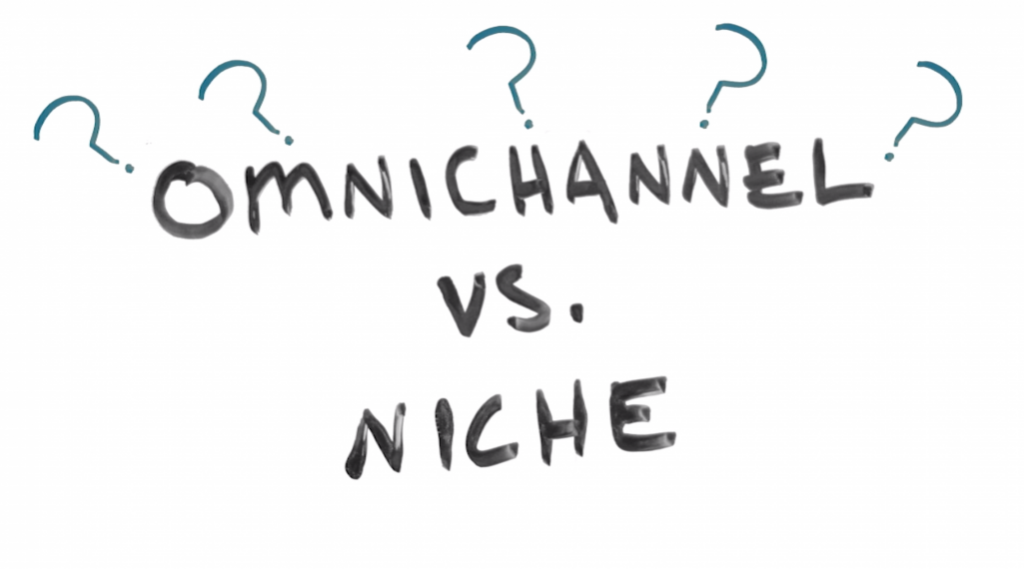Fuel campaign performance with laser-focused targeting

When selecting a demand-side platform (DSP) for your programmatic campaigns, should you choose an omnichannel DSP or a more specialized DSP? That all depends. To go over the differences between these two types of DSPs and to determine which one is right for your digital advertising and programmatic media buying priorities, check out this Whiteboard Wednesday video:
All DSPs are not the same. Some are omnichannel, while others are niche. Let’s dive into what these terms mean.
An omnichannel DSP is meant to be a one-stop solution designed to work across a variety of channels like desktop, video, audio, OTT, etc. Often, these DSPs are ideal to scale top-of-funnel awareness.
A niche DSP is mainly focused on one channel and one channel only, like video or display. Niche DSPs also frequently focus on specific mid-funnel and bottom-funnel goals and objectives.
So which option is right for you? That all depends on your goals and what you’re trying to achieve.
If you have an app business and want new users with a high lifetime value, then a niche DSP with an in-app focus is ideal for you.
In the world of online advertising, what is a DSP and why would brands and agencies use one? Here’s how we previously defined the term:
"A DSP is an online platform that gives advertisers the ability to easily buy display ads on ad exchanges, ad networks and other available inventory sources they are connected with.
A DSP is an extremely popular buying platform because it enables advertisers to buy from a wide selection of inventory, optimize their campaign performance and view reporting analytics from a central interface.
From time to time, a DSP can be used for real-time bidding (RTB). This gives advertisers the ability to buy media across multiple ad exchanges. DSPs also often centralize ad bidding and reporting in one interface.
For example, ad exchanges like DoubleClick by Google and OpenX are both marketplaces for advertisers to bid and auction for available ad inventory from publishers. In this case, the DSP would have access to allow users to bid on the inventory available across both exchanges.
Also, a DSP will often allow the advertisers to plug in data collected by a third party (like a DMP). This data can be leveraged to create a target audience and better optimize campaign performance."
But how do DSPs actually work? Here’s how Digiday explains it: “DSPs allow advertisers to buy impressions across a range of publisher sites, but targeted to specific users based on information such as their location and their previous browsing behavior. Publishers make their ad impressions available through marketplaces called ad exchanges, and DSPs automatically decide which of those impressions it makes the most sense for an advertiser to buy.”
As we noted in our July 2019 webinar with Adweek, consolidation continues to happen among omnichannel DSPs in the ad tech space. While buyers don’t often do exclusive DSP deals like they did in the early days, buyers are trying to limit the number of primary omnichannel DSPs that they work with to as few as possible.
At the same time, the use of specialized DSPs is on the rise. For in-app mobile programmatic buying, the fastest growing specialized DSPs deliver on location or app performance (install and remarketing) use cases. And, these specialized DSPs represent around 20% of the mobile ad programmatic market now.
As time spent in-app and media spend increases, there is a greater need for a DSP built specifically for the needs of this environment. As opposed to an omnichannel DSP, which may cover web display, social, OTT and many other advertising environments, specialized DSPs are often not cross channel but just focused on one area for a particular set of marketing needs.
Do you use specialized or omnichannel DSPs? What do you look for in demand-side platforms? Let us know on social media! We’d love to hear from you on Twitter, LinkedIn and/or Facebook.
Want to learn more about mobile DSPs and how to choose the right option? Check out these blog posts and case studies for further insights:
Register to our blog updates newsletter to receive the latest content in your inbox.